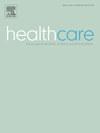加强产科培训,解决部落、农村和服务不足社区的产科护理人员短缺问题:来自俄克拉荷马州的一个案例
IF 2.1
4区 医学
Q3 HEALTH POLICY & SERVICES
Healthcare-The Journal of Delivery Science and Innovation
Pub Date : 2025-09-08
DOI:10.1016/j.hjdsi.2025.100768
引用次数: 0
摘要
美国正面临着怀孕护理提供者的短缺,特别是在部落、农村和服务不足(TRU)社区。在俄克拉荷马州,该州一半以上的县被认为是缺乏产科(OB)提供者或服务的产科护理沙漠。在俄克拉何马州的TRU地区,获得妊娠护理的机会有限,导致该州孕产妇发病率和死亡率高。家庭医学(FM)医生在住院期间接受基本的产科培训,并且通常是这些县中唯一为地理上孤立和社会弱势群体提供妊娠护理的提供者。2021年,俄克拉何马大学社区医学院为FM居民推出了一项增强的OB培训课程,以帮助解决俄克拉何马州TRU社区的劳动力短缺问题。本文描述了增强培训课程的设计和实施,总结了前两年实施的结果,并分享了该领域的经验教训。本文章由计算机程序翻译,如有差异,请以英文原文为准。
Enhanced obstetric training to address maternity care workforce shortages in tribal, rural, and underserved communities: a case from Oklahoma
The United States is facing a shortage of pregnancy care providers, especially in tribal, rural, and underserved (TRU) communities. In Oklahoma, more than half of the state's counties are considered maternity care deserts that lack obstetric (OB) providers or services. Limited access to pregnancy care in Oklahoma's TRU areas contributes to the state's high rates of maternal morbidity and mortality. Family medicine (FM) physicians receive basic OB training during residency and are often the only providers delivering pregnancy care for geographically isolated and socially vulnerable populations in these counties. In 2021, the University of Oklahoma School of Community Medicine launched an enhanced OB training curriculum for FM residents to help address workforce shortages in Oklahoma's TRU communities. This article describes the design and implementation of the enhanced training curriculum, summarizes results from the first 2 years of implementation, and shares lessons learned for the field.
求助全文
通过发布文献求助,成功后即可免费获取论文全文。
去求助
来源期刊

Healthcare-The Journal of Delivery Science and Innovation
HEALTH POLICY & SERVICES-
CiteScore
4.90
自引率
0.00%
发文量
37
期刊介绍:
HealthCare: The Journal of Delivery Science and Innovation is a quarterly journal. The journal promotes cutting edge research on innovation in healthcare delivery, including improvements in systems, processes, management, and applied information technology.
The journal welcomes submissions of original research articles, case studies capturing "policy to practice" or "implementation of best practices", commentaries, and critical reviews of relevant novel programs and products. The scope of the journal includes topics directly related to delivering healthcare, such as:
● Care redesign
● Applied health IT
● Payment innovation
● Managerial innovation
● Quality improvement (QI) research
● New training and education models
● Comparative delivery innovation
 求助内容:
求助内容: 应助结果提醒方式:
应助结果提醒方式:


